For Koi Farm players, if you want to know how to breed Koi more effectively, here you will get the info about breeding combinations.
BEGINNING
- White
- Black
- Yellow
- Grey (rarely swims in the river)
Useful tip: the more you breed THE SAME 2 fishes, the more the chance you’ll get a rare mutation.
MIXING SAME SOLID COLORS
Black + black = 4-5 black
Yellow + yellow = 5 yellow / 4 yellow + 1 orange (~30% chance)
Orange + orange = 4-5 orange / 3 orange + 1 yellow (~30% chance) / 3 orange + 2 red (~11% chance)
Red + red = 4 red / 2-3 red + 1-2 orange (~30% chance)and so on.
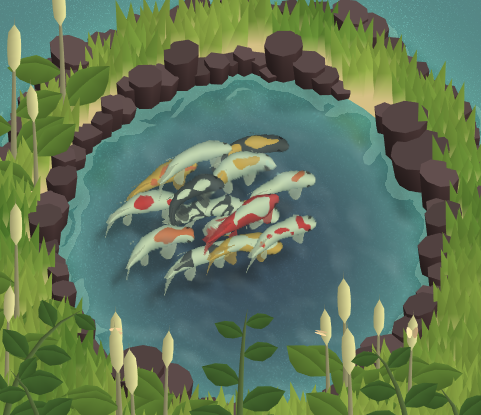
HOWTO GET RARE MUTATIONS
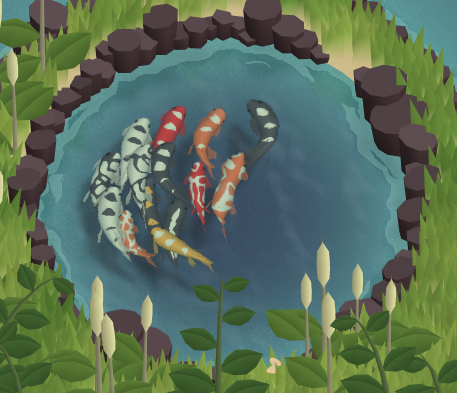
Breed the same 2 orange fishes until you get the red mutation. ~11% chance.
Fishes with red color (in any proportion) could give an orange mutation in its offspring with ~10% chance.
Here are my 15 attempts of breeding 2 same orange fishes and its results:
5 orange;
4 orange + 1 yellow;
5 orange;
5 orange;
5 orange;
5 orange;
4 orange + 1 yellow;
4 orange + 1 yellow;
3 orange + 2 red;
3 orange + 2 red;
3 orange + 2 red;
3 orange + 2 red;
3 orange + 2 red;
5 orange;
5 orange;
Breed the same 2 yellow fishes until you get the orange mutation. ~30% chance.
Fishes with orange color (in any proportion) could give a yellow mutation in its offspring with ~10% chance.
Breed 2 red fishes. It took me about 15 attempts to get the pink finally.
Breed 2 spotted fishes with the same dominant and additional colors until you get the mutation needed. Sometimes it’s needed to do 3-4 times.
Breed 2 spotted fishes with the same dominant and additional colors until you get the mutation needed. Sometimes it’s needed to do 3-4 times.
COLOR MIXING
Mixing 2 different solid colors could give you offspring with only solid colored fishes, but there is ~50% chance that you’ll get 1-2 spotted fishes. There is a chance to get a fish with any dominant color (for example, black with 2 white spots or reverse – white with 2 black spots). The amount of spots could be from 1 to 3. Just keep breeding the same fishes until you get the pattern mutation needed. The proportion of fish amount of every colouration could be different, so I just marked possible results without numbers. Names of colors are shortened by their first letters.
White + black = pure white / pure black / 1-2 wthite + 1-2 black + 1 spotted b&w
White + yellow = pure white + pure yellow + spotted (white & yellow) / spotted (orange & white) / pure orange
White + orange = white; orange; yellow; spotted (w&o / w&y)
White + red = pure white / pure red / pure orange/ spotted (white & red) / spotted (white & orange)
and so on.
Will give you spotted fishes.
Will give you 3-colored fishes. Choose the spotted fish with the dominant color needed and breed it with the fish with solid color you want to add.
If fishes have the same dominant color and different additional color will give you 3 colored fish, the dominant color will be saved. Unique patterns block the color adding, so pick up only solid and spotted fishes for this.
If fishes have different dominant colors, the offspring will repeat parents color combinations and patterns.This combination will give only color mutation (orange→red, red→orange, yellow→orange, orange→yellow) and the color inversion as a unique result .
For example:
donesn’t work:
spotted (b&w) + spotted (red & yellow) → spotted (b&w); spotted (red & yellow); spotted (orange & yellow)
works:
spotted (white & yellow) + spotted (white & black) → spotted (w&y; w&b) + pure + spotted (w&y&b)
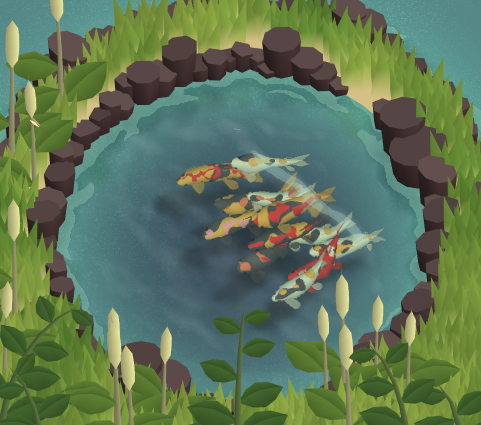
You can easely check if you’ve got 3-colored fish by adding it to a card.
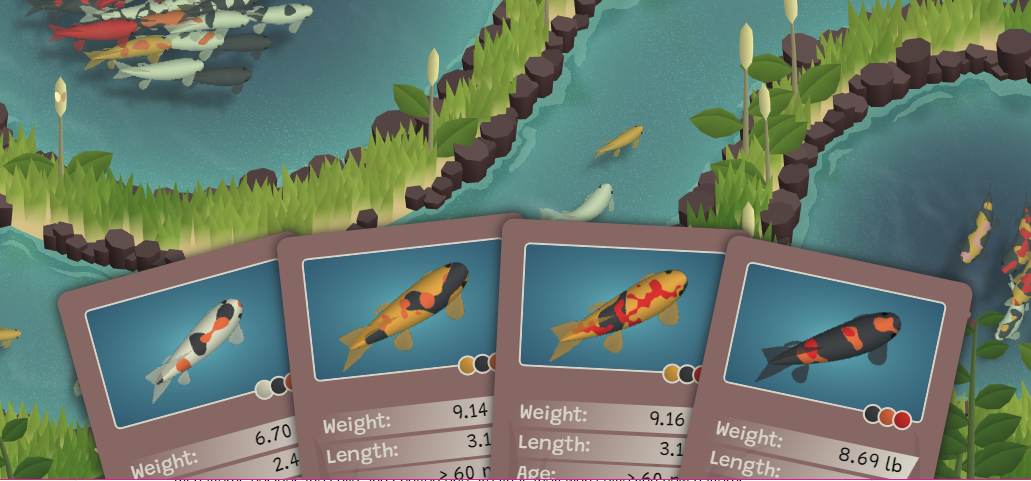
MIXING PATTERNS
1. solid color (white) + solid color (black) → spotted fish (w&b)
2. solid color + spotted → different variations of spots
3. spotted + spotted → more different variations of spots (it’s better)To make a unique pattern you have to pick up fishes with the same dominant color.
If you’ll pick fishes with different dominant colors it wouldn’t work, the offspring will repeat the parents’ patterns. Breeding of 2 fishes with the same pattern could give you an inverse color version (for example, 2 black fishes with 3 lines on a back will give in their offspring 1 white fish with 3 black lines).
There are 6 patterns: solid (pure color without pattern), spotted (1-3 random spots), 3 or 4 lines (3 or 4 transverse lines on a back), 1 longitudinal line on a back, brindle (a lot of spots). All patterns besides the solid and spotted one are final, they won’t give you new patterns when mixing besides inverse coloration.
Here are only 2 combinations that work:
spotted + spotted → spotted; 3 lines; 4 lines; brindle
spotted + 3 lines → spotted; 3 transverse lines; 1 longitudinal line
Other combinations will repeat parents patterns.
Will be continued.

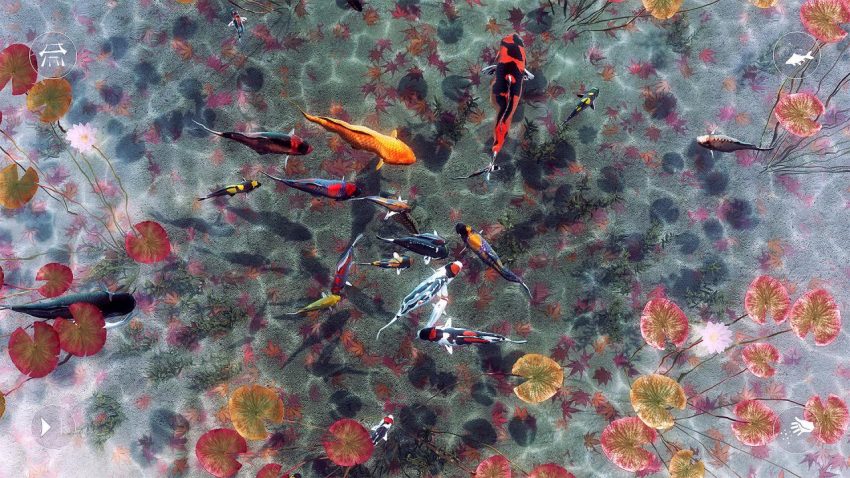
Comment obtiens t´on des kois de couleurs BLEUS et de couleurs VERTES ?